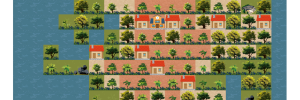Classroom-based learning is one of the main ways to teach children emotional and social skills. Internet and technology are changing the way we discover and learn things today. It’s now more important than ever to make classroom-based learning exciting and fun. Digital games are a great tool to do this! They help children develop self-awareness, manage emotions and show empathy towards others. Keep reading to find out how to incorporate digital games into the classroom.
Incorporate the Nordic Way
Nordic countries believe in the “joy of learning”. Schools in the North have placed emphasis on creativity, collaboration, and communication. They incorporate joint problem-solving activities and collaborative group assignments into the curriculum. These are key to making learning fun and allow students to explore their natural talents. These can be incorporated into play-based learning – allowing children to have fun and be creative while expanding their knowledge.
The Nordic Way helps support their curiosity, encouraging them to take control of their own learning. If a student finds joy in learning, it will no longer be a chore, but something they look forward to doing.
Designing a Personalised Game

Teachers can design educational games based on their learners’ knowledge level. It is also important that students can discuss their learning with their teachers. This way, a unique and personalized game will be created that will, make the learning process fun and exciting!
This enhances student participation and active learning. Students are intrinsically motivated to play games that are designed around their knowledge and learning style. This motivation makes learning easier and more appealing.
Introducing Existing Games
There are many educational games out there that you could introduce into classroom activities! Different games target different needs and will help boost social and emotional learning in an exciting way.
Here I will list some examples. The “Social Adventures App” can provide you with a range of activities that will help students gain important social skills. It helps them understand how to act appropriately in social situations. One of the activities explains the importance of saying someone’s name to gain their attention before talking to them. Students are then asked to role-play similar scenarios to practice. These are particularly helpful to those who have trouble with relationships.
“Middle School Confidential” is a digital graphic novel accompanied by quizzes, written by an anti-bullying activist, Annie Fox. With a focus on relatable situations such as friendships, changing family situations, the game provides quizzes, tips, and tools to help players learn to navigate difficult situations. This teaches self-appreciation to those who deal with low self-confidence and helps teenagers feel good about themselves as it allows players to relate to characters that have similar lives to them.
“Classcraft” is an educational role-playing game in which students go on quests that can be linked with lessons. Students work together with their team of classmates to overcome challenges. Students are able to support each other in their learning by collaborating with one another to reach their goal. It helps drive engagement in the classroom and increases schoolwide collaboration.
Why not introduce games that your students may already know? Minecraft Education Edition promotes creativity, collaboration and problem-solving. It combines the fun elements of the original version with an immersive learning experience.
Operation: REACH, Boys & Girls Club of America is great for developing resiliency skills. In this interactive, educational video game, players work with the Captain of the ship to rescue crewmates. Players have to find tools to help manage stress and anxiety, which helps players learn about coping with stress and anxiety in real-life.
Active Play
Incorporating games into the classroom culture can be a powerful learning tool for children as it allows students to be engaged in the learning progress. Games are a collaborative and interactive experience. They will guide learners’ social and emotional development.
The rise of high-speed internet has made the virtual world more popular than ever. But active play also has an important role in the development of a child. Take a break from the digital tools and encourage your students to be physically active. Engagement in a team sport may help children build social skills. They will be able to practice teamwork and leadership skills in a natural, playful environment. Interaction with their peers and cooperation for the common goal will additionally strengthen social bonds and improve group dynamics.
How did you like this post? Let us know in the comment section or on our social media! You can also fill this short survey to help us create better contentent for you!





